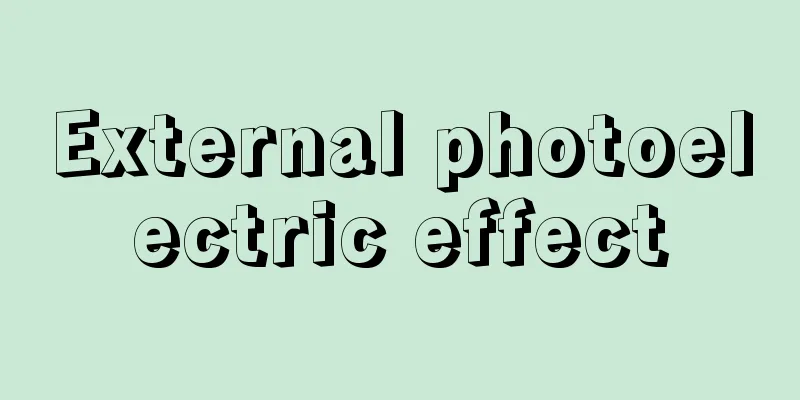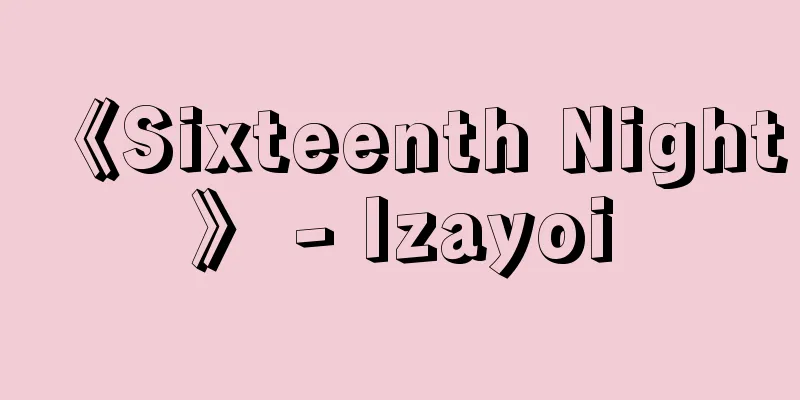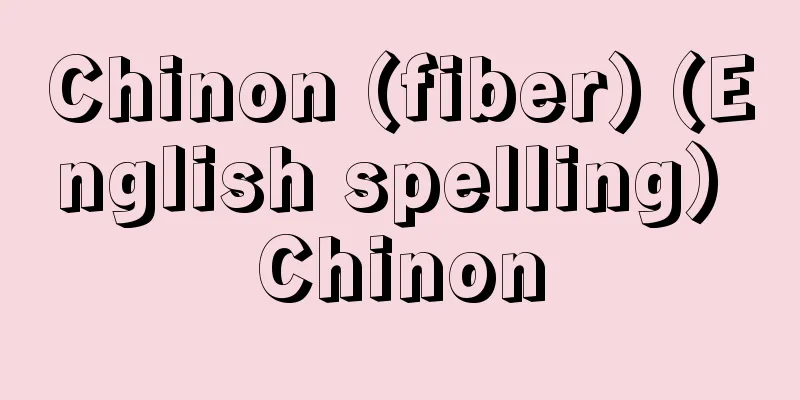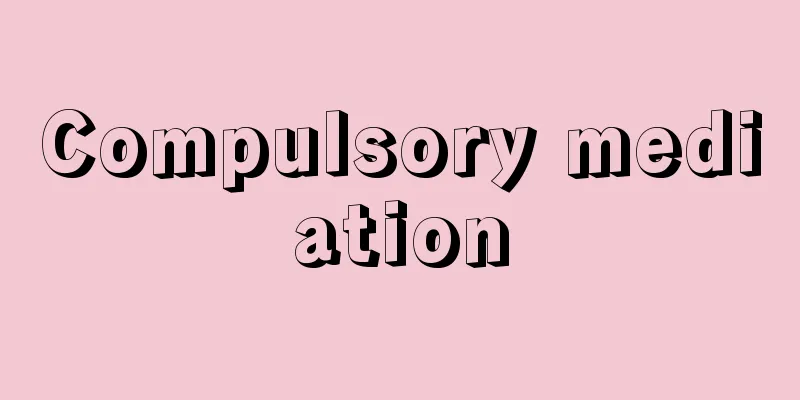Youth Protection and Development Ordinance - Seishounen Hogoikusei Jorei
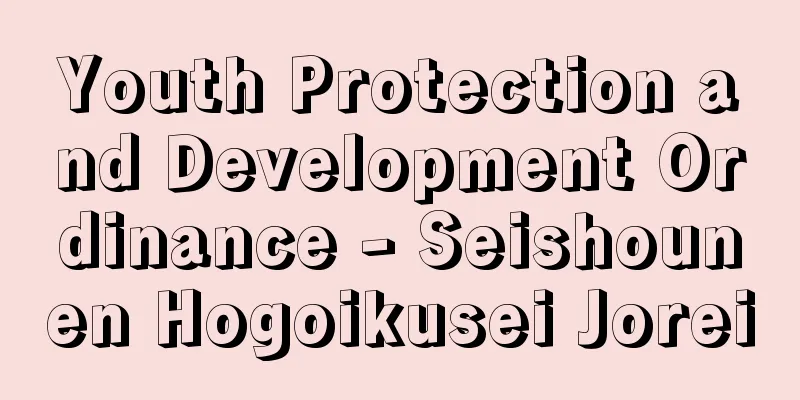
|
Ordinances enacted by local governments (municipalities) for the purpose of protecting, healthy development, protection and upbringing, caring for, and improving the environment for minors (those under 18 years of age). They are also called minor protection ordinances, minor healthy development ordinances, and minor ordinances. Some prefectures call them environmental cleanup ordinances. [Masao Horibe] HistoryPrefectural ordinances of this type have been of interest since around 1950, and 12 prefectures enacted them in the 1950s. In the 1960s, 19 prefectures enacted them, in the 1970s, 13 prefectures, and in the 1980s, 2 prefectures enacted them (as of March 2011, Nagano Prefecture was the only prefecture that had not enacted an ordinance). In addition to these, some basic local governments have enacted youth protection and development ordinances. In the mid-1970s, as magazine vending machines and other devices became more widespread, restrictions on magazine vending machines also began to be imposed. In addition to this ordinance, some local governments have enacted ordinances that regulate magazine vending machines and other devices. In the mid-1990s, discussions began on regulating telephone clubs and other businesses through ordinances, and some local governments have made them the subject of ordinances. Furthermore, provisions regulating lewd conduct have also been established, and in such cases, they are usually called lewd conduct ordinances rather than youth protection and development ordinances. In recent years, there have been some cases of ordinances being revised to promote the widespread adoption of filtering (detecting whether a web page on the Internet contains harmful content and controlling access). Revised ordinances have been enacted in Hiroshima City, Hyogo Prefecture, Ishikawa Prefecture, Saitama Prefecture, and others, while Tokyo, Kanagawa Prefecture, Shizuoka Prefecture, Kyoto Prefecture, and others are considering enacting such legislation. [Masao Horibe] Regulatory mattersThe regulated items vary depending on each ordinance, but according to a summary by the Cabinet Office, they can be roughly classified into the following categories. (1) Restrictions on harmful books, etc. Restrictions on the sale of harmful documents and drawings, restrictions on the viewing of harmful performances, etc., orders to take measures against harmful advertisements, and restrictions on the sale of harmful toys. (2) Restrictions on vending machines: Restrictions on the sale of harmful documents, drawings, etc., harmful toys, and sanitary products. (3) Restrictions on acts that hinder healthy development: Restrictions on lewd sexual acts and obscene acts, prohibition on providing or arranging a venue for such acts, restrictions on going out late at night, restrictions on buying and pawning secondhand goods, restrictions on the sale of harmful chemicals, restrictions on entering entertainment venues late at night, restrictions on lending money, prohibition on acts that induce gambling (restrictions on harmful games), prohibition on possession of dangerous materials, prohibition on entering restaurants, prohibition on entering adult entertainment establishments, prohibition on smoking and drinking, restrictions on entry to harmful facilities, restrictions on tattoos, and prevention of acts that induce and encourage delinquency. (4) Restrictions on the operation of dating cafes: Obligation to file a business report, establishment of no-business areas, prohibition of minors from entering, obligation to display a "no minors allowed" sign, restrictions on advertising and promotion, prohibition of solicitation, obligation to keep an employee list, and on-site inspections. (5) Regulations on harmful information on the internet, etc. Obligation of "mobile phone operators, etc., internet connection operators, operators who provide internet-connected terminals for public use, and internet connection device manufacturers and sellers" to provide filtering, etc. Obligation of server administrators (including information senders) to make efforts to prevent information from being viewed, etc. Obligation of parents to make efforts to prevent minors from viewing harmful information, etc. (6) Other: Restrictions on motel operations, recommendations to inns near schools, notification of those operating inns, recommendations of quality entertainment and books, voluntary restrictions by entertainment operators, and on-site inspections. Furthermore, since the Youth Protection and Development Ordinance has aspects that restrict freedom of expression, freedom of business, property rights, private life, etc., various discussions are taking place, including arguments that it is unconstitutional. [Masao Horibe] Dramatic changes in the information environment and the enactment of the Youth Internet Environment Improvement ActInitially, the information environment for young people was strongly regional (local), and local governments played a large role. However, in Japan, the Internet began to spread explosively from the mid-1990s, and the information environment has not only become nationwide (national), but has also spread across borders to a global scale (global). This dramatic change in the information environment led to the passage of the Act on the Development of an Environment in which Young People Can Use the Internet Safely and with Peace of Mind (Youth Internet Environment Development Act) in the Diet in June 2008. The Youth Internet Environment Development Act stipulates the following "basic principles" to enable the national and local governments to formulate and implement policies to enable young people to use the Internet safely and with peace of mind (Article 3 of the Act). (1) Young people will be empowered to use information and communications devices independently, to appropriately select and use information circulating on the Internet, and to acquire the ability to appropriately disseminate information via the Internet. (2) Minimize opportunities for young people to view content harmful to young people by improving the performance of software for filtering content harmful to young people and disseminating its use, and by taking measures by business operators involved in young people's use of the Internet to prevent young people from viewing content harmful to young people. (3) Recognizing the importance of free expression and the characteristics of the Internet, which allows a wide range of actors to engage in a wide range of expressive activities worldwide, the private sector will play a major role in taking initiative and independently, and the national and local governments will respect this. [Masao Horibe] The need for local governments to recognize their responsibilities and raise awarenessThe Youth Internet Environment Improvement Act clearly stipulates that the national and local governments have the responsibility to formulate and implement policies to enable young people to use the Internet safely and with peace of mind, in accordance with the basic principles mentioned above (Article 4 of the Act). As mentioned above, the information environment surrounding young people is expanding from local to national and from national to global. In light of this global nature, international organizations such as the Organization for Economic Cooperation and Development (OECD) and the International Telecommunication Union (ITU) are placing importance on improving the Internet environment for young people. The OECD is currently working towards a Council Recommendation on online youth protection. The ITU is also actively promoting the Children Online Protection (COP) Action Plan. This issue has hardly been recognized in Japan, but we must pay particular attention to global trends and consider what the national and local governments of Japan can and should do in this context. Local governments, in particular, are trying to fulfill their role in the issue of the Internet and young people, and are discussing the revision of youth protection and development ordinances. As we have made clear here, they need to recognize the scope of their responsibilities, strive to raise awareness of a global perspective, and also recognize the limitations of ordinances (Article 94 of the Constitution and Article 14 of the Local Autonomy Law). [Masao Horibe] "Ordinance Research Series 7: Juvenile Protection Ordinances, Public Security Ordinances" edited by Okuhira Yasuhiro (1981, Gakuyo Shobo)" ▽ "Juvenile Ordinances: Issues Between Freedom and Regulation" edited by Shimizu Hideo and Akiyoshi Kenji (1992, Sanseido)" ▽ "Criminal Trial Practice Series 3: Prevention of Adult Entertainment and Prostitution" edited by Sato Fumiya (1994, Seirin Shoin)" ▽ "Sexual Rights Forum: Questions about the 'Prostitution Ordinance': Can we eliminate prostitution of young girls? (1996, Gendaijinbunsha)" ▽ "Juvenile Delinquency and the Law" by Ishikawa Masaoki, Sone Takehiko, Takahashi Norio, Taguchi Morikazu, and Moriyama Masashi (2001, Seibundo)" ▽ "The Youth Internet Environment Improvement Act and the Role of Local Governments: The Need for Discussions Based on a Global Perspective" by Horibe Masao (published in the Summer 2010 issue of Local Government Legal Research, Gyosei)" [References] | | |Source: Shogakukan Encyclopedia Nipponica About Encyclopedia Nipponica Information | Legend |
|
青少年(18歳未満の者)の保護、健全育成、保護育成、愛護、環境整備、環境浄化などを目的として地方公共団体(自治体)によって制定される条例。青少年保護条例、青少年健全育成条例、青少年条例などともよばれている。環境浄化条例と称している県もある。 [堀部政男] 沿革この種の条例は、都道府県では、1950年(昭和25)前後から関心が寄せられ、1950年代には12の道府県で制定された。1960年代には19の都県で、また1970年代には13県で、さらに1980年代には2府県で制定された(2011年3月の時点で、都道府県で未制定は長野県のみ)。これら以外に基礎自治体で青少年保護育成条例を制定しているところもある。なお、1970年代中葉に雑誌自販機などが普及したのに伴い、雑誌自販機規制も行われるようになった。本条例とは別に、雑誌自販機などを規制の対象とする条例を別に定めている自治体もある。また、1990年代中葉からテレホンクラブ(テレクラ)などの営業を条例で規制する議論が起こり、それをも条例の対象にするものが出てきた。さらに、淫行(いんこう)を規制する規定も設けられており、その場合には、青少年保護育成条例というよりも淫行条例とよばれるのが通例である。近年、フィルタリング(インターネット上のウェブページで有害なものがないかを判断し、アクセスを制御すること)の普及徹底に向けた条例改正が行われる例も出てきている。広島市、兵庫県、石川県、埼玉県等では改正条例が施行され、東京都、神奈川県、静岡県、京都府等で条例化が検討されている。 [堀部政男] 規制事項規制事項は、それぞれの条例で異なっているが、内閣府のまとめによると、おおむね次のような事項に整理されている。 (1)有害図書等の制限 有害文書図画の販売等制限、有害興行等の観覧の制限、有害広告物に対する措置命令、有害玩具(がんぐ)の販売制限。 (2)自販機の制限 有害文書図画等・有害玩具・衛生用具の販売制限。 (3)健全育成を阻害する行為の規制 みだらな性行為およびわいせつ行為の制限、場所の提供または周旋の禁止、深夜外出等の制限、古物等買受および質受等制限、有害薬品類の販売等制限、深夜における興行場等への立入制限、金銭の貸付等の制限、射幸心誘発行為の禁止(有害遊技制限)、危険物所持の禁止、飲食店等への立入禁止、風俗営業所内への立入禁止、喫煙および飲酒の禁止、有害施設等への入場規制、いれずみの規制、非行誘発助長行為の防止。 (4)出会い系喫茶営業に対する規制 営業の届出義務、営業禁止区域の設定、青少年の入場禁止、「青少年入場禁止」の表示義務、広告および宣伝の規制、勧誘行為の禁止、従業員名簿の備え付け義務、立入調査。 (5)インターネット上の有害情報に係る規制等 「携帯電話事業者等、インターネット接続事業者、インターネット接続端末を公衆の利用に供する事業者、インターネット接続機器製造・販売事業者」のフィルタリング提供義務等、サーバ管理者(情報発信者含む)の閲覧防止努力義務等、保護者の青少年への有害情報閲覧防止努力義務等。 (6)その他 モーテル設置営業の規制、学校周辺の旅館等に対する勧告、旅館業を営む者の届出、優良興行および図書の推奨、興行者等の自主規制、立入調査。 なお、青少年保護育成条例は、表現の自由、営業の自由、財産権、私生活などを規制する側面をもっているので、違憲論を含むさまざまな議論が行われている。 [堀部政男] 情報環境の劇的な変化と青少年インターネット環境整備法の制定青少年にかかわる情報環境は、当初は、地域性が強く(ローカル性)、地方公共団体が果たす役割も大きかった。ところが、日本では、1990年代中葉からインターネットが爆発的に普及し、情報環境は全国的になってきた(ナショナル性)ばかりでなく、国境を越えて世界的広がりをもつようになった(グローバル性)。そして、この情報環境の劇的な変化は、2008年(平成20)6月に、国会において「青少年が安全に安心してインターネットを利用できる環境の整備等に関する法律」(青少年インターネット環境整備法)の成立をもたらした。青少年インターネット環境整備法は、国および地方公共団体が、青少年が安全に安心してインターネットを利用できるようにするための施策を策定し、それを実施するために、次のような「基本理念」を規定している(同法3条)。 (1)青少年自らが、主体的に情報通信機器を使い、インターネットにおいて流通する情報を適切に取捨選択して利用するとともに、適切にインターネットの情報発信を行う能力を習得させる。 (2)青少年有害情報フィルタリングソフトウェアの性能の向上および利用の普及、青少年のインターネットの利用に関係する事業者による、青少年が青少年有害情報の閲覧をすることを防止するための措置等により、青少年が青少年有害情報を閲覧する機会をできるだけ少なくする。 (3)自由な表現活動の重要性および多様な主体が世界に向け多様な表現活動を行うことができるインターネットの特性に配慮し、民間における自主的かつ主体的な取組みが大きな役割を担い、国および地方公共団体はこれを尊重する。 [堀部政男] 自治体の責務認識と意識向上の必要性青少年インターネット環境整備法は、国および地方公共団体が、前述のような基本理念にのっとり、青少年が安全に安心してインターネットを利用することができるようにするための施策を策定し、実施する責務を有することを、明文化している(同法4条)。 前述したように、青少年を取り巻く情報環境は、ローカルからナショナルへ、ナショナルからグローバルへと拡大してきている。このグローバル性を踏まえて、経済協力開発機構(OECD)や国際電気通信連合(ITU)などの国際機関においては、青少年のインターネット環境の整備が重要視されている。OECDでは、オンライン上の青少年保護に関する理事会勧告に向けて検討が行われている。また、ITUでは、児童オンライン保護(Children Online Protection:COP)行動計画を積極的に推進している。 このことは、日本では、ほとんど認識されていないが、とくにグローバルな動向に注目し、そのなかで、日本の国または地方公共団体が何をすることができるか、また、何をなすべきかについても検討しなければならない。とくに自治体は、インターネットと青少年の問題について役割を果たそうとして、青少年保護育成条例の改正論議を行っているが、ここで明らかにしたように、その責務の範囲を認識し、グローバルな視点について意識の向上に努めるとともに、条例の限界(憲法94条および地方自治法14条)についても認識する必要がある。 [堀部政男] 『奥平康弘編著『条例研究叢書7 青少年保護条例 公安条例』(1981・学陽書房)』▽『清水英夫・秋吉健次編『青少年条例――自由と規制の争点』(1992・三省堂)』▽『佐藤文哉編『刑事裁判実務大系3 風俗営業・売春防止』(1994・青林書院)』▽『性の権利フォーラム編著『「淫行条例」の疑問――少女売春はなくせるのか!?』(1996・現代人文社)』▽『石川正興・曽根威彦・高橋則夫・田口守一・守山正著『少年非行と法』(2001・成文堂)』▽『堀部政男著「青少年インターネット環境整備法と自治体の役割――グローバルな視点を踏まえた議論の必要性」(『自治体法務研究』2010年夏号所収・ぎょうせい)』 [参照項目] | | |出典 小学館 日本大百科全書(ニッポニカ)日本大百科全書(ニッポニカ)について 情報 | 凡例 |
<<: Political Strategy - Seijoyoryu
Recommend
Tetraneura
...In Tokyo, they are called "Oowata" o...
Fujiutsugii - Fujiutsugii
A deciduous shrub of the Buddleaceae family. The ...
Ote - Ote
...The 4,000m2 cavern that was created by mining ...
Bongartz, H.
…The orchestra was named after the building where...
Crown Island
An island located about 10 km north-northwest of ...
Flame plant - Flame plant
…They grow in both marine and inland waters, and ...
Robe - Houe
Abbreviation of Nyoho clothing. Also called Hofu,...
Arima Harunobu
A Christian feudal lord in the Azuchi-Momoyama pe...
Inugusu - Inugusu
→ Machilus Source : Heibonsha Encyclopedia About M...
Od Harkins' Law
… [Chemical elements and simple substances] An el...
Interest Rate Measures - Kinrisochi
... Accumulation and double-deposits are a way fo...
Pseudo-hallucination
...The mechanism of psychiatric symptoms is thoug...
Production programming
In factories, this refers to the management of adj...
Cervantes - Miguel de Cervantes Saavedra
Spanish novelist, playwright and poet. [Kuwana Ka...
Para
〘Epime〙 (para) A word used in chemistry etc. to di...



